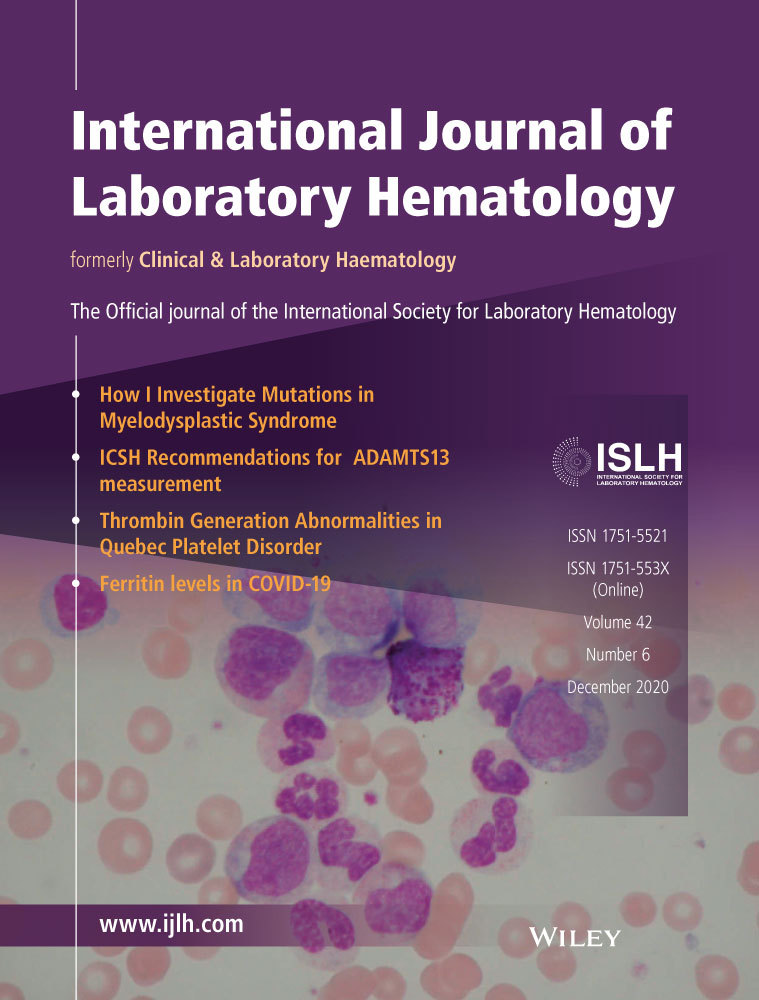Pitfalls in CALR exon 9 mutation detection: A single-center experience in 571 positive patients
Abstract
Introduction
The pathogenesis of myeloproliferative neoplasms (MPNs) is closely related to the acquisition of specific molecular alterations in JAK2, MPL, or CALR genes, the presence of which represent major diagnostic criteria in the WHO classification. The CALR exon 9 insertions and deletions are very heterogeneous, and their detection mainly relies on polymerase chain reaction (PCR) fragment length analysis.
Methods
We report on the rare nonclassical profiles that we observed among the 1382 patients analyzed by PCR fragment length analysis. In difficult cases, we tested germline DNA and performed NGS analysis.
Results
We faced some troubling results because of the presence of several unexpected peaks. Our investigations showed that they resulted from a mix of isolated or double somatic mutations combined with germline alterations which could be misleading for a correct diagnosis. The precise interpretation of such difficult cases is mandatory as a misinterpretation could lead to the prescription of cytoreductive drugs to nondiseased persons or to an absence of treatment in true MPN patients.
Conclusion
Our observations showed that every mutation should be verified by direct Sanger sequencing, and we show that sometimes it may be necessary to study germline DNA and to complement with NGS analysis to precisely interpret the molecular alterations.
CONFLICT OF INTEREST
The authors declare they have no competing interests.




